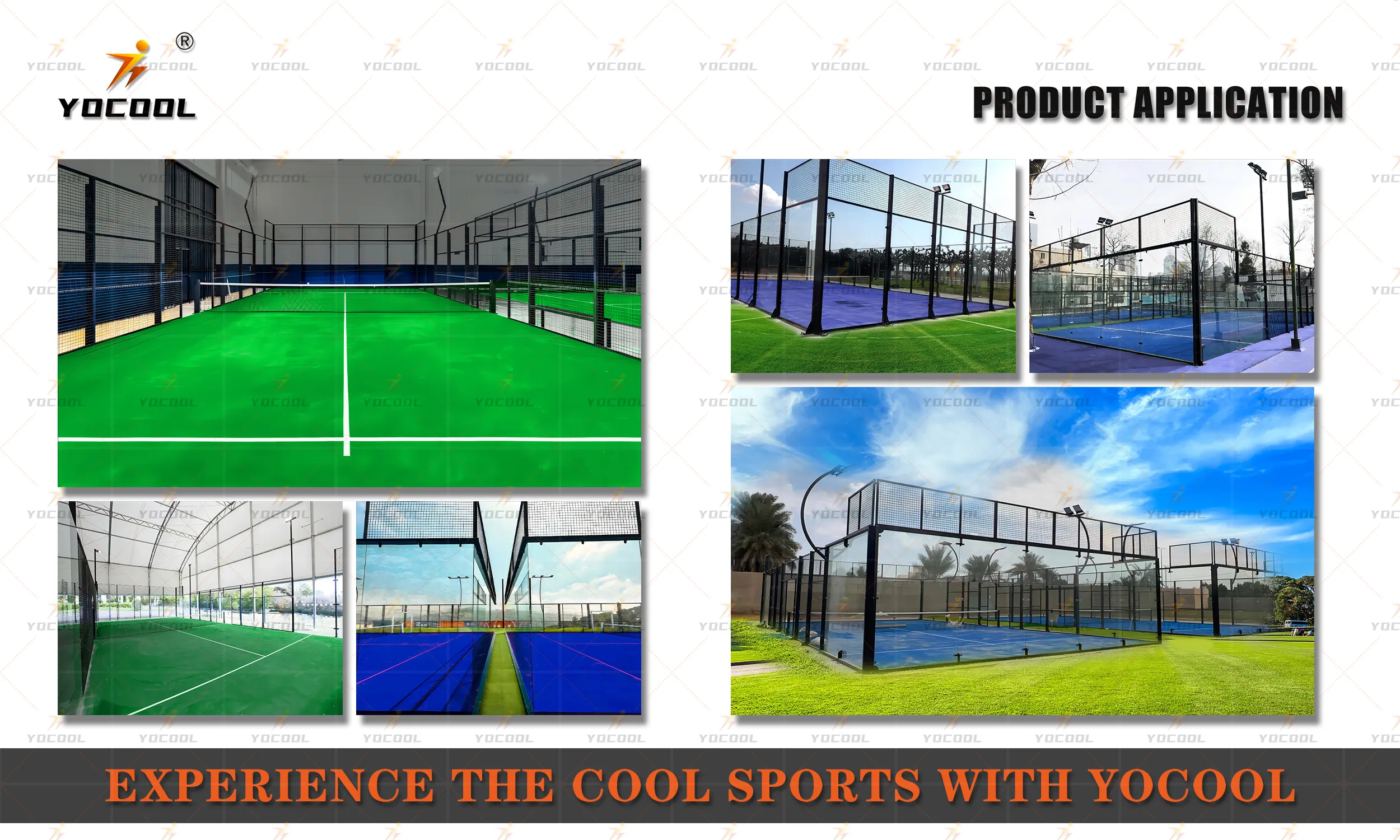

The Rise of Tennis and Padel A Comparison of Two Exciting Sports
In recent years, both tennis and padel have gained significant popularity across the globe. While they are distinct sports with unique features, they share a common heritage and appeal to a wide range of players. This article delves into the similarities and differences between tennis and padel, examining their growth, rules, equipment, and the social dynamics they foster among players.
Historical Background
Tennis has a rich history that dates back to the late 19th century, originating in England. The modern game evolved from earlier racquet sports such as real tennis and lawn tennis, which were played by the nobility. Over the decades, tennis has grown into a global phenomenon, with major tournaments like Wimbledon, the US Open, the French Open, and the Australian Open capturing the attention of millions.
Padel, on the other hand, is a relatively newer sport, having emerged in Mexico in the 1960s. It was created by Enrique Corcuera, who adapted the game of squash for a smaller court and, over time, the sport spread to Spain and then to other countries. Today, padel has become one of the fastest-growing sports in Europe and Latin America, with Spain leading in terms of participation and professional competitions.
Playing Environment and Court Dimensions
One of the main differences between tennis and padel lies in the playing environment. Tennis is typically played on larger courts with varying surfaces, including grass, clay, and hard courts. A standard singles tennis court measures 78 feet long and 27 feet wide for singles matches, while the dimensions for doubles matches are 36 feet in width.
Padel courts, however, are significantly smaller, measuring 66 feet long and 33 feet wide. They are enclosed with glass walls and a mesh fencing that allows players to use the walls as part of the game, similar to squash. This unique design encourages longer rallies and creates a dynamic atmosphere during matches.
Rules and Scoring
While both sports share similar scoring systems (15, 30, 40, and game), the rules differ in several key areas. In tennis, players have the luxury of serving overhand, allowing for powerful serves that can dictate the tempo of the game. Padel players, by contrast, serve underhand, which emphasizes strategy and control rather than sheer power.

Moreover, padel matches are played in doubles format, which fosters teamwork and enhances the social aspects of the sport. Tennis can be played in singles or doubles, but the singles format often emphasizes individual skill and athleticism. This fundamental difference in gameplay shapes how both sports are played and enjoyed by participants.
Equipment
The equipment used in tennis and padel is also distinct. Tennis players utilize strung rackets, which vary in weight, length, and head size depending on personal preferences. The accompanying balls are larger and have a higher bounce compared to padel.
Padel players, on the other hand, use solid, perforated rackets that are typically shorter and lighter than tennis rackets. This design allows for more precise control and finesse. The padel ball is similar to a tennis ball but is slightly lower in pressure, resulting in a different playing experience.
Social Aspects and Community Building
Both tennis and padel foster a strong sense of community among players. Tennis clubs often serve as social hubs where members can gather, play, and engage in friendly competition. Many clubs organize leagues and social tournaments, enhancing camaraderie among participants.
Padel, with its emphasis on doubles play and smaller courts, naturally promotes interaction and teamwork. Players often find themselves developing friendships more easily due to the cooperative nature of the game. This has led to a vibrant padel community, where local clubs and leagues are flourishing, providing opportunities for social engagement.
Conclusion
In conclusion, while tennis and padel are two distinct sports, their shared elements and growing popularity illustrate the universal appeal of racquet sports. As more people discover the unique excitement that both tennis and padel offer, it is likely that these sports will continue to flourish, fostering community and healthy competition for years to come. Whether on a sprawling tennis court or an intimate padel arena, players from all walks of life are drawn to the rhythm and joy these sports provide. Ultimately, the choice between tennis and padel may come down to personal preference, but both contribute significantly to the world of sports and recreation.
Premium Paddle Racquet | AI-Optimized Design
Smart Padel Courts with GPT-4 Turbo AI
AI-Powered Paddle Racquet w/ GPT-4-Turbo Optimized
China Pro Ping Pong Paddle | Premium Spin Control
Premium AI-Enhanced Padel Court | GPT-4 Turbo Design
High-Quality Paddle Racquet for Professional Padel and Paddle Courts